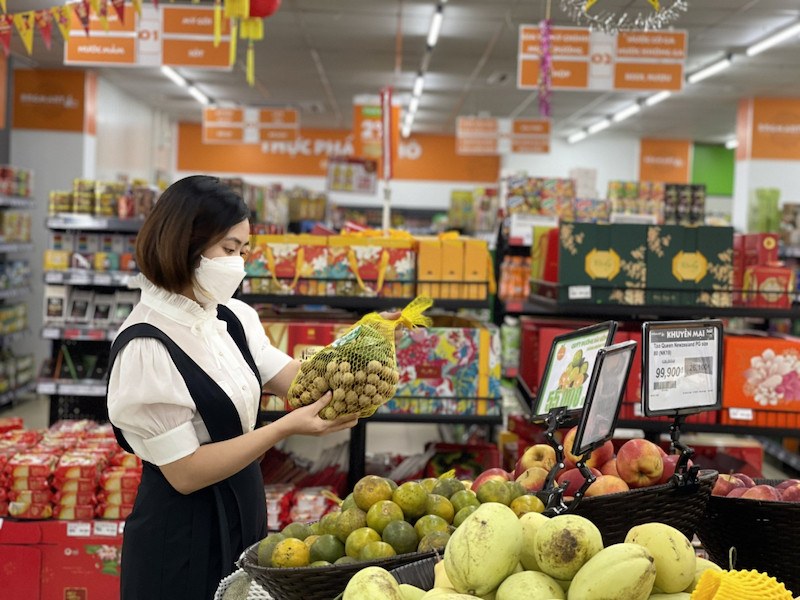Vietnam’s retail sector is expected to experience a rapid rebound in the coming year, according to the latest report by Deloitte Vietnam.
Vu Duc Nguyen, consumer industry leader in Vietnam at Deloitte, said: “We believe that at least some of the new omnichannel habits will become permanent as consumers get used to the convenience they offer. “
|
|
According to the report titled “Vietnam Retail 2022: Omnichannel Takes Off”, this year the Vietnamese economy looks poised for a rapid rebound despite slowing growth over the past two years due to the coronavirus pandemic. Covid-19. This promising outlook should have a positive impact on its retail sector, which is in the midst of several major transformations.
One trend that stood out was the accelerated normalization of omnichannel retail in the wake of the pandemic. Most Vietnamese consumers in urban areas are accustomed to omnichannel shopping, shopping through physical stores, brand websites and third-party instant messaging platforms and food delivery apps – switching between them to find the right delivery window or promotional offers.
According to the report, from a retailer’s perspective, the shift to omnichannel retail represents a multi-pronged strategy: by expanding their digital presence, retailers can not only mitigate some of the revenue losses associated with Covid-19 disruptions, but also exploit new customer bases. Specifically, through online or mobile platforms, retailers can now reach consumers who are far from their physical stores and who previously found it impossible or inconvenient to visit them.
Additionally, digital presences can also help retailers improve customer engagement. E-commerce platform Shopee, for example, is one player that has leveraged the use of mobile games to improve the overall user experience of its mobile app. Then there’s also the added benefit that a digital presence can help drive traffic to physical stores, or vice versa, Deloitte noted.
Or, customers researching and comparing product information online may decide to visit a store to view the physical product before making a purchase. Conversely, they can browse the products in different physical stores, before making the final purchase decision on the website.
As retail players seek to capitalize on this omnichannel trend, the consultancy is also witnessing the emergence of several new innovative partnerships within the marketplace. The “Ung ho nong san Viet” (support for Vietnamese agricultural products) program, for example, was launched by the Union of Commercial Cooperatives of Saigon in collaboration with the mobile payment platform Momo to support the local agricultural sector. Some of its recent initiatives include the promotional sale of locally grown lychees through the Momo e-wallet platform.
Changing Market Dynamics
The report revealed some of the impacts of Covid-19 on the non-food and grocery retail segments in Vietnam and how their market dynamics have changed over the past two years.
In the food retail segment, traditional food retailers continue to hold the majority of the market share. This dominance, however, experienced some erosion during the pandemic: following the detection of a significant number of positive Covid-19 cases on their premises, many traditional traders had to temporarily suspend their activities during the pandemic.
As a result, consumers who typically purchased from these retailers shifted their consumption to other grocery retail channels, such as convenience stores, supermarkets, and hypermarkets.
Given the boom in the grocery sector as consumers adopted pandemic-induced home shopping habits, it is also worth noting that many non-food retailers have also begun to make inroads into the grocery segment. the retail sale of food products. Earlier in May 2021, for example, e-commerce platform Tiki launched its grocery arm TikiNgon to meet growing demand for online shopping in the fresh food category.
Convenience stores are building omnichannel presences: Amid the pandemic, many convenience store chains have moved quickly to grow their omnichannel presences and expand their presence on food delivery platforms. Some players have also created and launched their own proprietary mobile applications to engage more directly with their customers.
In terms of market share, foreign chains dominate the convenience store sub-segment in Vietnam, with four of the top five brands owned by foreign multinationals such as Canada’s Circle K (48%), Japan’s Family Mart (18 %) and Ministop (14.3%), and 7-Eleven in the United States (7%).
Hypermarkets are gaining popularity for wholesale buying and assortment: During the pandemic, the hypermarket sub-segment had sought to capitalize on the shift to digital channels by expanding their online presences, both in terms of e-commerce and of mobile commerce.
Foreign multinational chains including BigC (Go!), Lotte Mart, Tops Market, AEON continue to dominate the hypermarket sub-segment, with many players able to leverage their unique product assortments as a competitive advantage.
Supermarkets are capitalizing on private label products and smaller formats: The supermarket sub-segment had benefited from the shift in consumer spending from traditional food retailers during the pandemic. Additionally, as consumers become increasingly price conscious, supermarket chains have also been able to capitalize on this with the attractive pricing of their own private label products.
“Going forward, two other developing trends are expected to continue to play out in the retail industry, with far-reaching long-term ripple effects. These are the accelerated adoption of digital wallets and non-cash payments; and the growth of the wholesale B2B e-commerce segment,” the report notes.
Source: Hanoitimes

